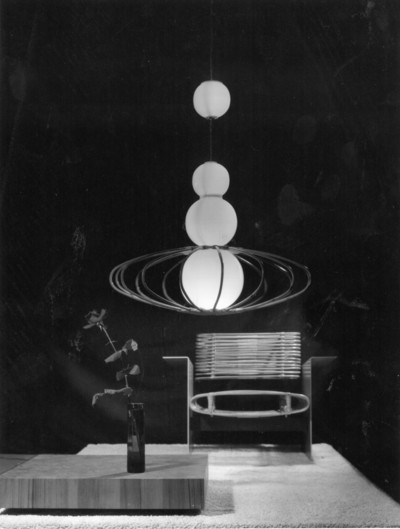Janine Abraham & Dirk Jan Rol
the 28 June 2019
The designer has two heads
For this year’s Design Parade, the historian Éléa Le Gangneux has the honour to present for the first time previously unseen works by the design couple Janine Abraham and Dirk Jan Rol. In designing the scenography for this retrospective, held at the villa Noailles, Dirk Jan Rol provides us with an opportunity to rediscover a period during which designers were responsible for inventing the lifestyle of the men and women of the twenty-first century. This exhibition is dedicated to Janine Abraham, who passed away in 2005.
Over more than thirty years, Janine Abraham and Dirk Jan Rol signed their designs with both of their names. At the same time designers, architects, and interior designers, their works were the fruit of an emulation and a complementarity that they fully embraced.
Janine Abraham was born in 1929 in Auvergne, Dirk Jan Rol was born the same year in a small village north of Amsterdam. Before joining the École Camondo, where she graduated first in her year group, Janine Abraham was a student at the École des beaux-arts in Paris. Dirk Jan Rol trained in cabinetry in a workshop in Amsterdam before being admitted to the École nationale supérieure des arts décoratifs
in Paris, where he graduated in 1954. It was working for the interior designer Jacques Dumond’s agency that the young pair met in 1955. Their first presentations already reflected the surprising and all-embracing nature of their creative approach. By symbolising an alliance of opposites, their works evoked the period: an era that was halfway between artisanal production and industrial manufacturing. This collaboration between this pair of designer inevitably implied a sharing of the workload. Janine Abraham
had inherited from her studies in the fine arts a creative freedom which permitted the conception of highly original shapes, in particular when working with rattan. Dirk Jan Rol endeavoured to make them into possible constructions and as he confided to a journalist in 1964: “We work together in a fashion where collaborating on the same project, we complete one another […] and it is fortunate to be this way, since that is what allows both of us to provide the other with what they are lacking.”
Their furniture designs were created with the aim of being mass-produced, but in the 1950s and 60s, there were not many manufacturers who dared to create contemporary pieces. Only old solid wood furniture was popular with French consumers. Yet, this entire generation of designers was affected by an unprecedented social humanism. The trauma caused by the Second World War pushed these young creators to turn their backs on unique pieces, to no longer produce for the financial elite, but for the people. The power of industrial machines should have allowed them to reproduce hundreds of thousands of examples of models, designed in considerable detail by the period’s greatest designers. Unfortunately, almost all of these designs remain at the prototype stage, or were made in small quantities. Removed from any kind of distribution network, the couple were never able to make a living from their work as designers and quickly switch to architecture and interior design. Amongst their many domestic and commercial creations, their houses — spared from any client restrictions — should be considered as genuine total works of art. Located in the towns of Sèvres and Meudon, south of Paris, these architectures symbolise the most representative synthesis of their creations, within which it is possible to detect the specific features of each of their commissions. Spaces designed by Janine Abraham and Dirk Jan Rol should be grasped in their entirety and answer a desire for symbiosis with the environment in which they are inscribed. Always respectful of the natural site upon which they emerge, these architectures are imbued with the ideas of Frank Lloyd Wright and Richard Neutra. Though their œuvre is perfectly grounded in their period, Janine Abraham and Dirk Jan Rol remained strongly attached to traditional craftsmanship. From concrete and glass architecture to a traditional weaving loom, the couple of Abraham and Rol expressed themselves by constructing. The materials that they used were chosen for their raw appearance and above all for the poetic contrasts they create. The objects which they created, like the different architectures, are not limited to responding to functional needs, but were also designed to evoke sensorial stimuli. The total conception of their creations and the permanent ambiguity within which they were inscribed reflect the originality of their approach, which was characterised by the complementarity of their talents, genres, and cultures. Abraham and Rol occupy a unique place — even if on the fringes — within the landscape of designers from the 1950s and 1960s. Their creations, which today belong to French heritage of the second half of the twentieth century, are a part of a process of industrial humanism, symbolising the rich and harmonious alliance of opposites, in a perpetual to-and-fro between tradition and innovation, the artisanal and the industrial.
Éléa Le Gangneux
Historienne - Université Paris Sorbonne / INHA
